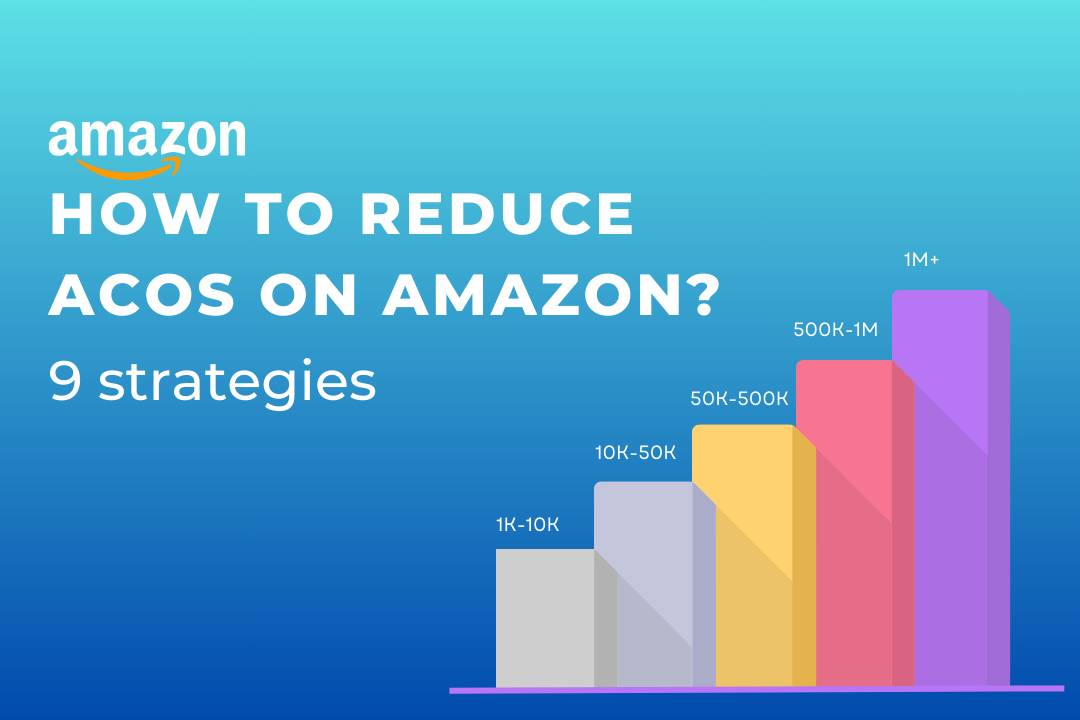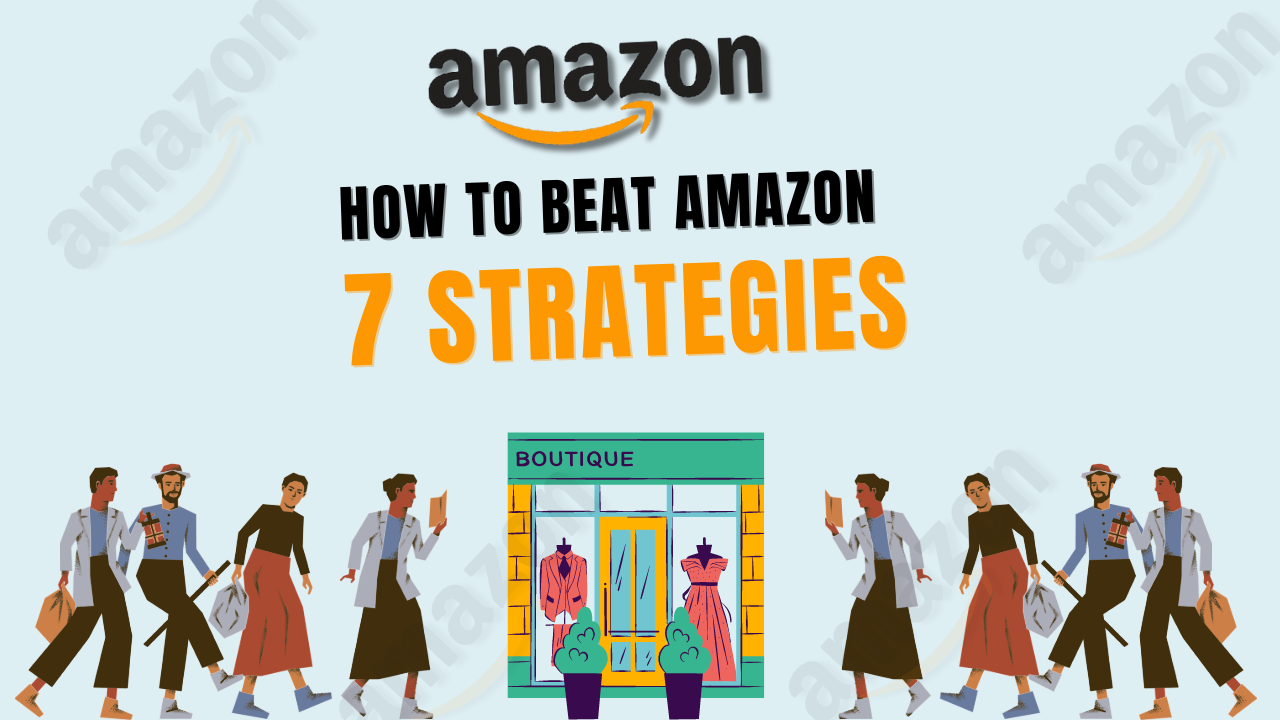Advertising Cost of Sales (ACOS) is a critical metric for any Amazon seller utilizing Amazon PPC (Pay-Per-Click) campaigns. It directly affects profitability and the efficiency of your advertising efforts. Lowering your ACOS means reducing the percentage of sales spent on advertising, which can lead to better margins and overall business success. This guide will dive deep into strategies to effectively reduce ACOS, ensuring your advertising spend yields the best possible return.
Table of Contents
Toggle1. Understand ACOS and Its Importance
ACOS is calculated by dividing your ad spend by the total sales generated. The formula looks like this:
ACOS = (Ad Spend ÷ Ad Revenue) x 100
For example, if you spent $200 on ads and generated $1,000 in sales from those ads, your ACOS would be 20%. A lower ACOS indicates that your ads are more cost-effective, while a higher ACOS means you spend more on ads than your revenue. Ideally, sellers want their ACOS to be lower than their profit margin to stay profitable.
Understanding how much to spend on Amazon PPC is crucial to ensure you’re investing in the right strategy. Check out our detailed guide on how much to Spend on Amazon PPC to set a realistic budget and avoid overspending.
2. Set Realistic Goals
Before diving into the technical aspects, it is essential to have clear and realistic goals for your ACOS. Every product and niche on Amazon has different profit margins. While some products can tolerate a higher ACOS, others cannot. Typically, new sellers aim for an ACOS below 30%, while experienced sellers often target 20% or lower, depending on their niche.
If your goal is long-term profitability, you should improve your organic ranking, lower advertising costs, and increase profit margins. For complementary strategies, consider reviewing our passive income guide on creating passive income through Amazon Kindle.
3. Optimize Your Amazon Product Listings
Having a well-optimized product listing is crucial to lower your ACOS. If your listing isn’t compelling, no amount of advertising will drive conversions. Here’s how to optimize your listing:
- Title: Use relevant keywords that match what buyers are searching for.
- Bullet Points: Highlight the key benefits and features of your product.
- Images: Use high-quality & high-resolution images that showcase the product from multiple angles.
- Description: Write a detailed description using keywords but keeping it customer-friendly.
- Customer Reviews: More reviews, especially positive ones, will improve your conversion rates.
You can add editorial reviews to learn how to add more credibility to your listings. Here’s a guide on adding editorial Reviews to Your Amazon Listing to boost conversion rates and lower ACOS.
4. Target the Right Keywords
One of the best ways to lower ACOS is by targeting the right keywords in your Amazon PPC campaigns. Many sellers waste their budget by bidding on broad or irrelevant keywords. Here’s how to improve keyword targeting:
- Use Long-Tail Keywords: These targeted keywords are less competitive and more specific, resulting in a higher conversion rate.
- Negative Keywords: It is important to utilize negative keywords in order to eliminate irrelevant search terms that may be causing a waste of your ad spend.
- Review Search Term Reports: Regularly check which search terms are converting and which are wasting your budget.
If you are new to keyword strategies, we recommend learning how to add variations to an existing Amazon listing to enhance your product visibility further.
5. Leverage Automatic Campaign Data
When running automatic campaigns, Amazon will display your ads to customers based on their search behaviour. While automatic campaigns aren’t as targeted as manual ones, they can provide valuable data to improve your manual campaigns.
- Start with Automatic Campaigns: Use these campaigns to get the data on which search terms drive more sales.
- Move to Manual Campaigns: Once you have enough data, switch to manual campaigns with the best-performing keywords.
- Bid Optimization: Continuously adjust your bids on manual campaigns based on performance.
To learn more about how Amazon tools can help in different situations, visit How to Use the Amazon Basics Thermal Laminator for practical insights.
6. Use Amazon’s Bid Adjustments Wisely
Amazon provides several bid adjustment features that allow you to optimize your ad spending more effectively. For example:
- Dynamic Bids—Down Only: Amazon will lower your bids in real-time if a conversion seems less likely, helping reduce wasted ad spend.
- Dynamic Bids – Up and Down: This feature adjusts your bids up or down depending on the probability of a conversion. Be careful with this option, as it can sometimes increase costs.
- Placement Adjustments: You can increase your bids for ads that appear in top placements, which usually convert better.
Understanding bid management is critical. Learning How Long Amazon Takes to Restock can also inform your bidding strategy when product availability is crucial.
7. Focus on High-Conversion Keywords
Another key to reducing ACOS is focusing your budget on keywords generating conversions. Review your search term reports and identify which keywords generate the most sales. Then, increase the bids for those keywords and lower or pause the bids for underperforming ones.
This practice ensures that your budget is allocated to high-converting keywords, improving sales and ACOS.
Additionally, if you’re dealing with multiple SKUs, you can track and categorize your expenses more effectively by understanding How to Categorize Amazon Purchases for better budgeting.
8. Improve Your Organic Ranking
As your product’s organic ranking improves, you’ll rely less on advertising, directly lowering your ACOS. Here are a few ways to improve your organic ranking:
- Sales Velocity: Focus on increasing sales through promotions, discounts, or external traffic.
- Customer Reviews: Aim for positive reviews as they directly affect your product’s visibility and ranking.
- SEO: Optimize your listings for Amazon SEO by using high-traffic, relevant keywords.
For a broader view on improving Amazon business practices, explore our guide on How to Beat Amazon: 7 Strategies for Advanced Strategies.
9. Monitor and Adjust Your PPC Campaigns Regularly
A successful PPC strategy requires constant monitoring and adjustment. Amazon’s marketplace is dynamic, and keyword performance can change over time. Here’s what you need to do:
- Check Campaign Performance Weekly: Monitor metrics like click-through rate (CTR), conversion rate, and ACOS.
- Adjust Bids Regularly: Increase bids for keywords that are converting well and lower bids for those that are not.
- Pause Non-Performing Keywords: If a keyword has a high ACOS and low conversion rate over time, it’s best to pause it.
Make sure to evaluate your campaigns and review your Amazon Messages to stay in touch with your customers and improve your relationship and conversion potential.
Frequently Asked Questions
How to bring ACoS down on Amazon?
- To lower ACoS, optimize your product listings, target relevant keywords, use negative keywords, adjust bids strategically, and improve your organic ranking through increased sales and positive reviews.
Why is my ACoS so high?
- A high ACoS can result from targeting the wrong keywords, low conversion rates, high competition, inadequate product listings, or inefficient bid management.
What is a good ACoS for Amazon?
- A good ACoS typically ranges from 15% to 30%, depending on your profit margins. Generally, lower ACoS values are better for profitability.
Is a lower ACoS better?
- A lower ACoS is better as it means spending less on advertising than your sales, improving overall profitability.
Conclusion
Reducing Amazon’s ACOS requires optimization, data analysis, and constant adjustments. By setting realistic goals, refining your product listings, targeting the right keywords, leveraging automatic campaign data, and continuously improving your organic rankings, you can effectively lower your ACOS and boost profitability.
For more advanced Amazon strategies, visit our Amazon Services page to learn how we can help you grow your business!






